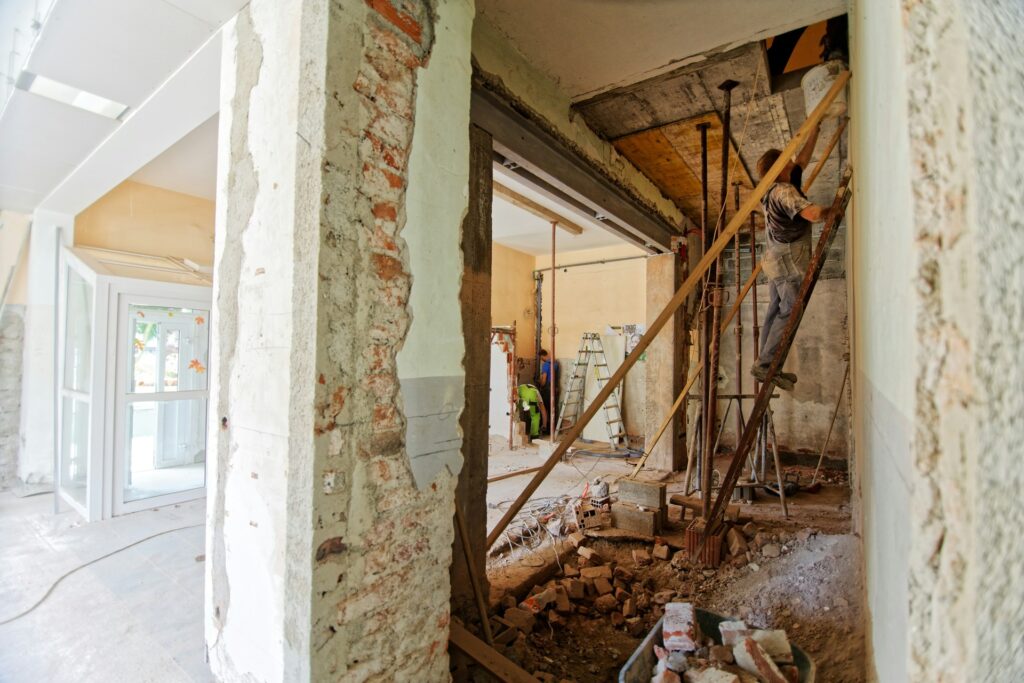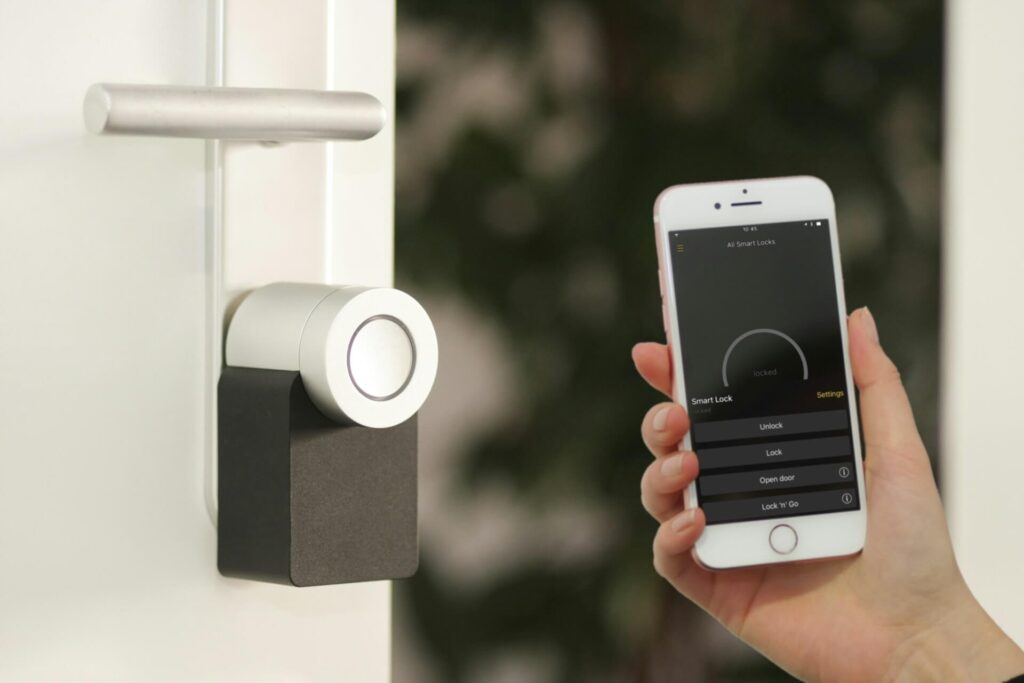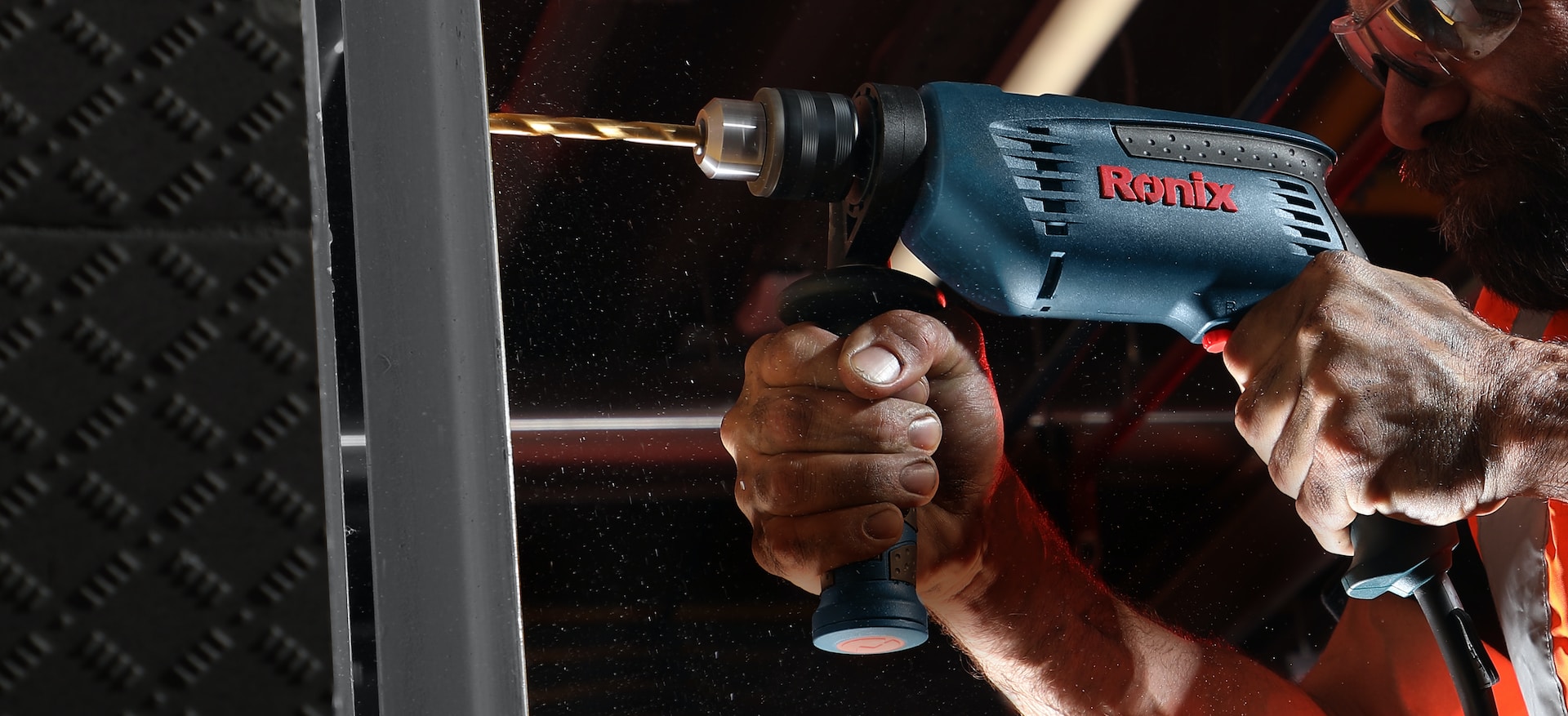
We are reader-supported. When you buy through links on our site, we may earn an affiliate commission.
A homeowner’s toolbox may include essentials like a tape measure, a hammer, screwdrivers (Phillips head and flathead), pliers, an adjustable wrench, a level, maybe even a stud finder. There may also be a couple of types of drills.
But outside of these basic hand tools, you’ll likely find yourself at some point in need of an electric drill—whether you’re tackling some DIY furniture assembly or maybe even installing your flatscreen TV on the wall to save some living room floorspace.
Keep reading to learn some of the main differences between the many types of drills available to you, what to look for from a performance and cost analysis standpoint, as well as some fun, cool tech you may not have known about.
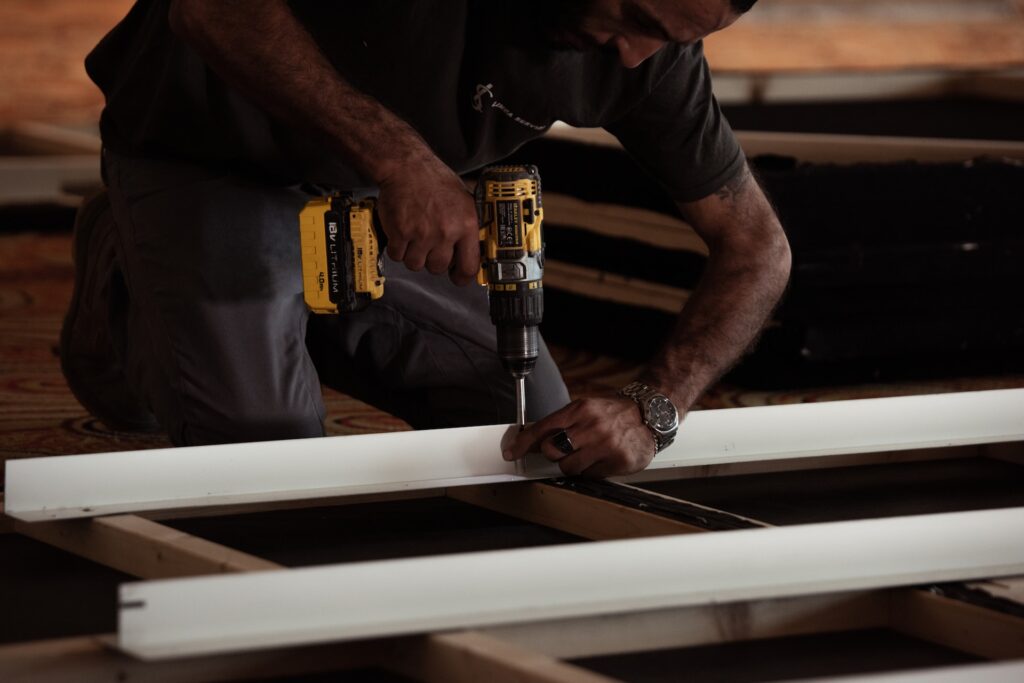
Types of Drills for Homeowners: What Are the Differences?
There are many types of drills a homeowner may consider adding to their toolbox depending on need, budget, and application.
With so many options, you may wonder, what are the differences between the common types of drills available to you?
Here are five types of drills a homeowner might consider:
1. Drill Driver
Best for: Drilling basic holes in wood, plastic, and thin metal, and driving fasteners (e.g., slot screws, Philips screws, hex sockets, etc.).
The standard drill is often referred to as “drill/driver,” not to be confused with impact driver. Drill drivers feature a motor that turns a drill bit, held in place by a “chuck,” which is usually hand-adjustable on modern drills.
What that nomenclature “drill/driver” refers to is its two primary features: Drilling (e.g., boring holes) and driving screws. These tools generally also feature forward and reverse modes to allow for both installing and removing screws.
2. Impact Driver
Best for: Greater torque in a smaller package.
As its name suggests, impact drivers (aka: impact drills) deliver a strong impact—sudden rotational force and forward thrust.
As the team at Pro Tool Reviews summarizes, impact drivers are “for when you need more torque.” They offer less speed in comparison to drills, but provide “extra torque to break loose stuck bolts… or drive them deeper into the material.”
3. Hammer Drill
Best for: Drilling in masonry materials (brick, stone, block, concrete) while also offering basic functionality of a standard drill.
Hammer drills, or hammer drivers, may bear a passing resemblance to a standard drill/driver—in fact, they offer the same basic functionality, but they add a “hammer” mechanism that delivers rotational force while simultaneously hitting the bit, the same way a hammer delivers its force.
The added functionality makes a hammer drill more versatile and a good bang for your buck but be sure to only use the hammer drill mode on these tools for drilling holes in concrete, masonry, or stone. If using it for less demanding situations—e.g., drilling screws in wood, drywall, or other soft materials; or drilling, tightening, loosening bolts—be sure use the drill mode on the tool.
4. Right-angle Drill
Best for: Drilling in tight spaces.
If you are restoring a house, you may find that you have to drill a series of holes in wall studs or floor joists to accommodate wiring or plumbing. These tight spaces make getting a standard drill (even the most-compact-in-class) challenging.
Enter: The right-angle drill. Right-angle drills feature a long handle and a small head that is set at a 90-degree angle, the ideal tool for tight spaces. They also feature a 3-speed motor to assure you’ll have enough torque to complete most jobs, and extensions can be added (up to 30 inches long) to help you, for example, when you’re working in a cramped attic.
Furthermore, a side handle gives you better access to the trigger, offering better control and comfort.
5. Electric Screwdriver
Best for: Convenience, efficiency, and versatility in drilling screws in delicate wood without sinking screw heads deep enough to split the wood.
An electric screwdriver may seem like a strange luxury when a homeowner may already have a drill and a set of screwdrivers. That said, there are some pretty compelling reasons to consider one if you can spare the expense.
Similar to a right-angle drill, an electric screwdriver offers greater access to drill screws in tight spaces where a traditional drill wouldn’t easily fit. In comparison to using a manual screwdriver, meanwhile, an electric screwdriver is less laborious and more efficient to drill screws in quickly and accurately, while driving less torque than a drill to ensure you’re able to work efficiently without overdriving. The same efficiency can be used in reverse, meaning that laborious manual screwing and then unscrewing can be replaced with rapid precision. Furthermore, you could even potentially swap out a toolbelt of screwdrivers for a single unit, saving you space around the house.
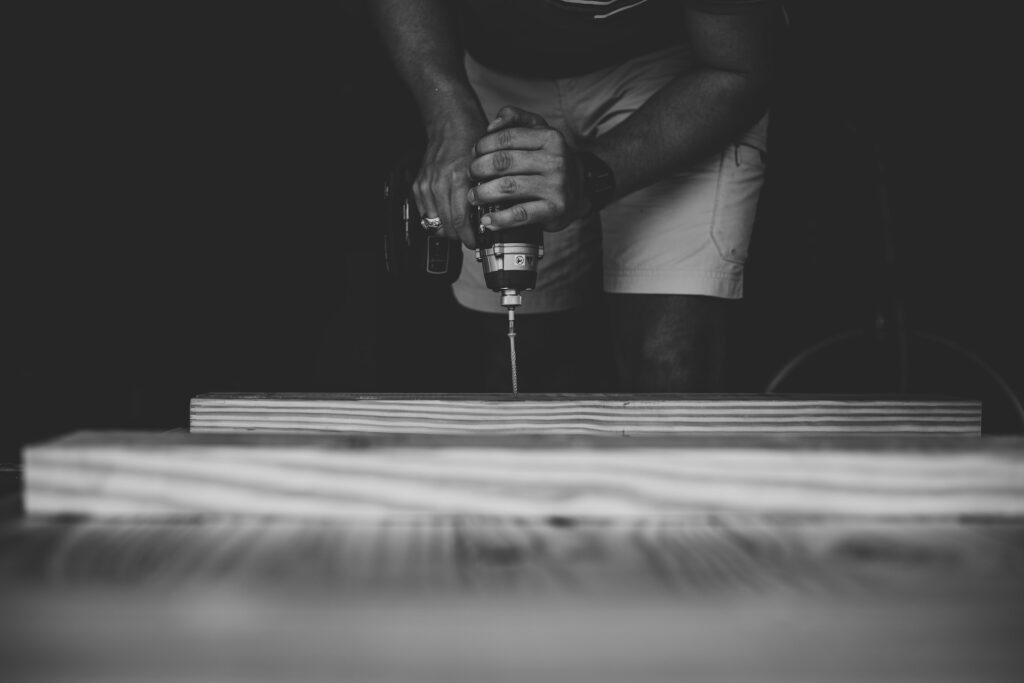
How to Choose Which Drill Is Right for You
We’ve covered some of the more common types of drills, but there are still some key differentiators you may consider when choosing which drill is right for you:
- Power source – i.e., does it plug into a wall or plug into a battery?
- Battery platform (if cordless) – what voltage is right for you?
- Motor – is a brushed motor sufficient or are you after a more high-performing brushless motor?
- DIY vs Professional Grade – do you want a more cost-effective option or are you interested in taking advantage of the performance and durability enjoyed by professional tradespeople?
- Tech – is a standard drill enough, or are you interested in one with more advanced technology?
Power Source
There are typically two power sources available when purchasing a drill:
Corded Power
Corded drills offer the benefit of a long history and evolution that stems back to the early days of Ford’s assembly line, when fabricators needed a lightweight, portable 1/4″ capacity power drill that would later be known as the Hole Shooter. Choosing a corded drill ensures you’ll have, by and large, dependable performance from corded technology that has evolved over the years. You likewise don’t have to worry about your battery running out, though you’ll have the inconvenience of having to find an electrical outlet nearby. Corded drills are also usually more cost-effective than cordless drills that pack on the price with costly batteries.
Pros of Corded Power
- Dependable performance
- More cost effective
Cons of Corded Power
- Need access to electrical outlet
- Trip hazards
Cordless Power
While it’s true that corded drills offer dependable performance, in fact cordless technology has been developing almost as long as corded power tools, dating back to 1961 when Black & Decker released the first cordless drill with a nickel-cadmium power source. Since then, Lithium-Ion battery technology has changed what’s possible for a cordless drill, in many cases matching corded performance while getting rid of the associated trip hazards of a cord plugged into an electrical outlet dangling.
Furthermore, cordless power tool technology has greatly improved to help end users perform tasks more safely. A 2002 Occupational Safety and Health Administration (OSHA) booklet outlined many of the dangers that corded power tools then presented, not having been developed in many years. These hazards included exposed moving parts, flying chips and sparks, in-running nip points, etc. (p. 5). Since then, advances in ergonomics make power tools easier and safer to use, while applications of advanced technology (like machine learning) have driven safety features that prevent dangerous kickback events.
Pros of Cordless Power
- Dependable performance, in some cases matching or exceeding corded performance
- Removes trip hazards
Cons of Cordless Power
- More expensive on average
- Need to charge batteries regularly, though runtime often can last a full workday
Battery Platform (If Cordless)
If you end up springing for a cordless drill, there are a few other considerations. For one, you’ll want to determine which battery platform and voltage makes the most sense for you.
Here’s some considerations:
- 12v: 12-volt battery-powered drills generally offer the advantage of being more portable. For example, a 3/8” drill can do most work around the house you’d need it for at a fraction of the cost of a larger drill. What’s more, socket adapters are available to increase drive size to 1/2”. And while 12-volt tools typically don’t perform to the same degree as their 18-volt counterparts, some higher-performance 12-volt, industry-lauded drills offer a lightweight design while delivering high-performance with 400 in-lbs of torque.
- 18v: 18-volt tools typically provide greater performance. Bosch’s award-winning PROFACTOR 18V Hammer Drill/Driver delivers an impressive 1330 in-lbs of torque and 2200 RPM on the top-end, for instance. You’ll often see 18-volt drills on job sites since they are more versatile than their smaller, baby brother 12-volt counterparts. What’s more, you can put the same socket adapters that convert a 3/8” drill to a 1/2″ in reverse to make an already versatile drill more versatile.
- 20v+: DeWalt and Hilti offer between 20 and 36 volt systems, respectively, which offer some of the highest performance at the correspondingly more substantial price.
- System Compatibility: At Milwaukee Tool, we’ve seen end users pick our tools for their system-wide compatibility that relieve them of having to break into another battery platform for a single solution. But the same compatibility of a 12-volt drill battery for a homeowner could mean having the convenience of a tire inflator and a heated jacket that run off that same battery.
Motor (Brushed vs Brushless)
Another consideration is whether the tool has a brushed or brushless motor.
Generally, if you can afford it, invest in a brushless motor.
Brushed motors don’t perform as well as brushless–though they are cheaper. They also require more frequent maintenance (every two years compared to brushless motors that you only service every seven years).
Brushless Motor Pros
- 50% more energy efficient, according to Consumer Reports
- Smaller, lighter, and quieter
- Lower maintenance
- Produces less heat
- Sensors make motors more responsive, adjusting speed, torque, and power supply depending on the application
Brushless Motor Cons
- More expensive (about 30% more expensive compared to brushed)
DIY vs Professional Grade
DIY power tool manufacturers like Hart and Ryobi offer solid performance and versatility of product lines for most households.
That said, professional-grade power tools from manufacturers like Milwaukee®, DeWalt, and Bosch, while carrying a higher expense, offer some great benefits:
- Significant performance gains not as commonly seen from DIY outfits
- Jobsite-grade durability that delivers greater tool life longevity
- Cutting-edge tech (see below)
Tech (Smart Drills): The Cool Factor and Enhanced Safety
Smart power tools offer more than the novelty of controlling the brightness and scheduling of jobsite lights:
- Tools can be tracked via a BLE network, and locked out when theft is suspected.
- Custom controls allow you to dial in precision settings for unique applications and allow you to get in and out of installations quicker, with greater accuracy and consistency.
- You can manage tool maintenance in a free app, and you can be automatically notified when your drill is up for service.
Bottom Line
There are a wide variety of drills available with each driving a specific purpose and application. Power tools (particularly lithium-ion battery powered ones) are continually advancing, so it’s never been a better time to cut the cord.
About Author

Lucas Marshall is a Content Marketing and SEO Manager at Milwaukee Tool, where he and his team raise awareness and education about the company’s SaaS platform, ONE-KEY™, and IoT solutions through a variety of content vehicles, such as the company’s Connectivity Blog for which he serves as head strategist and editor.



